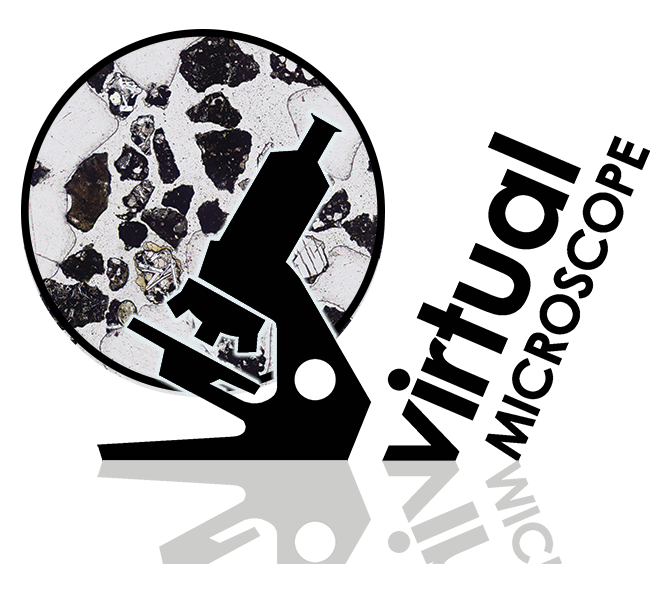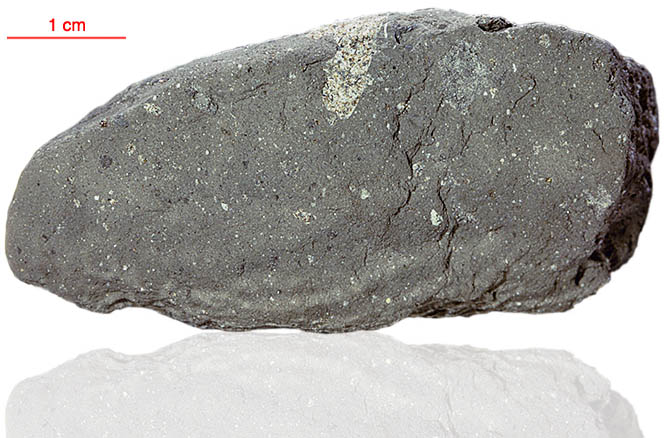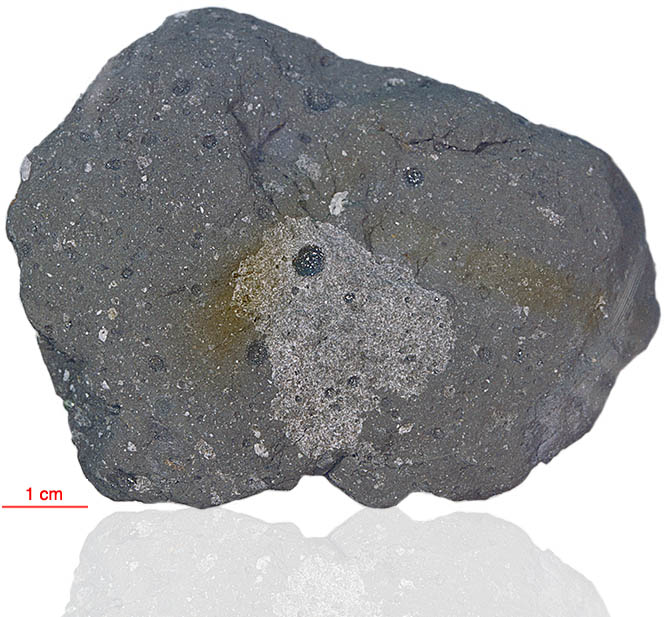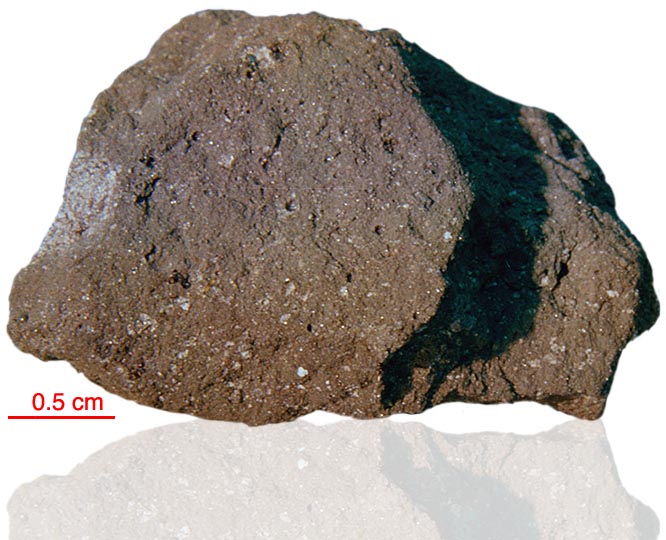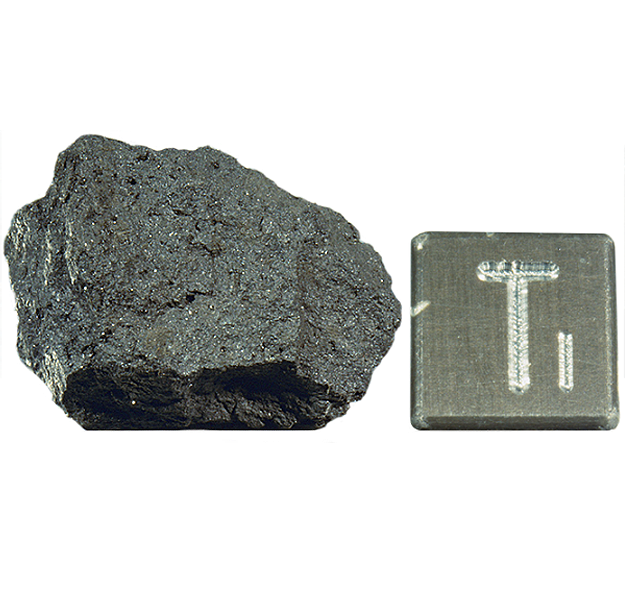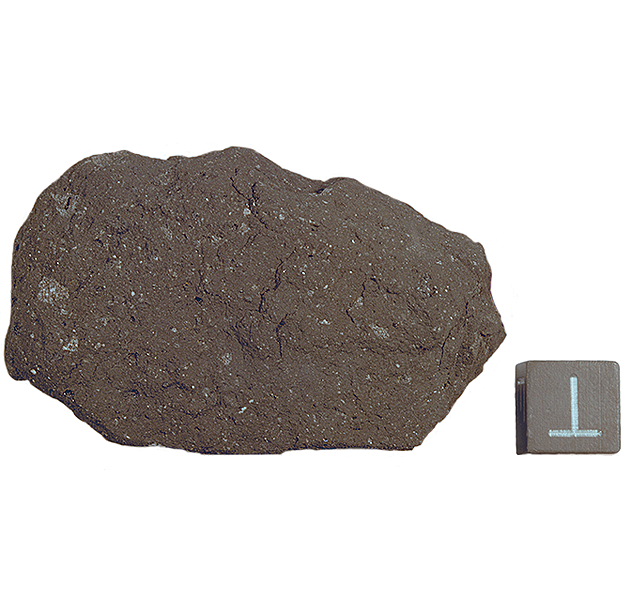
Fact sheet
10022 is a fine-grained, vesicular, ilmenite rich basalt with relatively high potassium content. It was collected close to where the lunar module touched down on the surface of the Moon. It crystallised 3.6 billion years ago and has been exposed at the surface for around 500 million years.
The most notable feature of the thin section and the hand specimen, are the near spherical holes which formed during eruption while the magma erupted as a liquid, and remained in the rock after it cooled. They give an indication of the high concentrations of gas that were dissolved in the liquid magma and exsolved into bubbles during the eruption. Plagioclase feldspar and pyroxene (both augite and pigeonite) are the major silicate minerals in this rock. They are accompanied by the black (opaque) oxide mineral, ilmenite which unusually displays two habits - both tabular and platy.
Armalcolite is a rare Mg-Fe-Ti oxide mineral first discovered in this and a few other Apollo 11 rocks. The mineral was unknown at the time on Earth and the name was derived from the three astronauts who manned Apollo 11. A 1970 publication reporting its discovery can be downloaded here: http://rruff.info/uploads/PA11LSC1_55.pdf
Further details of 10022 and other Apollo samples are here: http://curator.jsc.nasa.gov/lunar/
The Apollo 11 samples create an iconic collection since they were the first rocks collected by humankind that were returned to Earth from another solar system body. The Apollo 11 team collected and returned 22 kg of rock and soil samples.
Apollo 11 launched from Cape Kennedy on 16 July 1969. An estimated 530 million people watched Armstrong's televised image and heard his voice describe the event as he took "...one small step for a man, one giant leap for mankind" on 20 July 1969.

